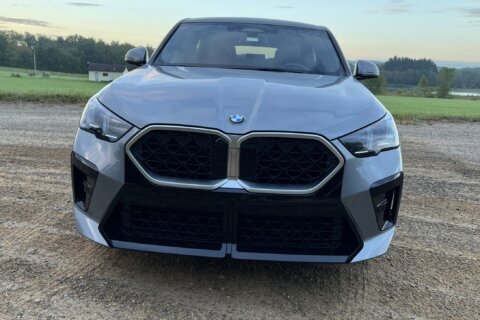Cadillac’s new Escalade, which was unveiled Tuesday at an event in Hollywood, California, will drive itself on major highways — without the driver even having to hold the steering wheel or put their foot on the pedals.
The 2021 Cadillac Escalade will offer an updated version of General Motors’ Cadillac Super Cruise system. First made available on the CT6 sedan in 2017 and improved since, the technology allows the driver to remove their hands from the steering wheel when the vehicle is driving on designated major highways.
The driver also does not need to operate the accelerator or brake pedals while using the system. However, an in-car camera will still make sure the driver is watching the road ahead. A colored light bar along the top of the steering wheel rim and special sound alerts will let the driver know when the system is operating and if the driver needs to take control.
Super Cruise is somewhat similar to Tesla’s Autopilot, except Autopilot allows drivers to remove their hands from the steering wheel only for short periods of time. Autopilot also does not monitor the driver’s attention to the road.
With its latest software updates, GM also added the ability to safely perform lane changes when one is requested using the turn signal stalk. The vehicle also now moves over slightly within its lane when passing by large vehicles like trucks. Before, Super Cruise would keep the car in the center of its lane which, when tested by CNN Business, sometimes felt uncomfortably close to much larger vehicles.
GM said the updated Super Cruise system will be available on other Cadillac models later this year.
Tuesday night’s introduction of the new Escalade came after recent unveilings of the new Chevrolet Tahoe and GMC Yukon. GM’s three large SUV models are closely related to one another and will be built in the same final assembly plant in Arlington, Texas.
The biggest differences between the Escalade and the other two models will be on the inside. In place of the usual gauge cluster, the Escalade will have a large OLED, or organic light-emitting diode, screen that’s curved toward the driver. A small screen for critical driver information is nested within a much bigger screen that includes controls for things like the radio. The screens have the pixel density of a high-definition television and are so bright they don’t require the usual shroud that goes over most cars’ gauges to shield them from sun glare, according to GM.
The new Escalade will also offer augmented reality navigation with three-dimensional sound cues. A view of the road ahead will be displayed on the big OLED screen in front of the driver. Arrows giving turning instructions will appear in just the place on the road where the maneuver should happen. At the same time, voice alerts about upcoming turns will sound as if they are coming from the side toward which the turn should be taken. The voice will also seem to get closer to the driver as the turn is approached. The effect provides the driver with an additional cue as to the direction and location of an upcoming maneuver. The feature can be turned off.
Outside, the new Escalade looks like an update of the current model, with more chiseled styling. For the first time, a Sport version will be offered on the Escalade with the grill and other exterior decorations in black instead of shiny chrome. Large 22-inch wheels will be standard equipment as well as a 10-speed automatic transmission.
The standard engine will be a 6.2-liter V8 while, for the first time, a diesel engine will be offered as an option. Like the Tahoe and Yukon, the new Escalade will also have independent rear suspension for a better ride and handling. The base model will also be slightly longer than before, allowing for more passenger room, particularly in the third row, and more cargo space.
The Escalade will go on sale this summer. GM has not yet announced pricing, but models that are currently available start at about $75,000.







